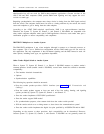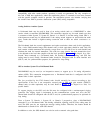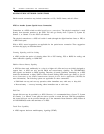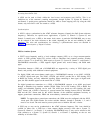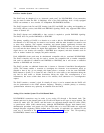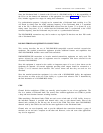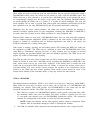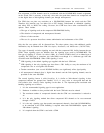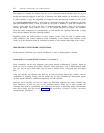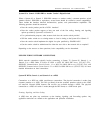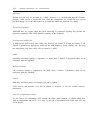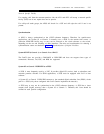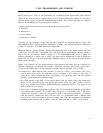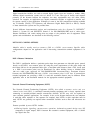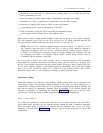
2-12
NETWORK CONNECTIONS AND CONFIGURATIONS
The method for selecting the channels that are to be compressed and the channels that are to pass
through uncompressed depends on the type of signaling used. Both methods are described as follows.
If VBR signaling is used, the assignment of compressed and uncompressed channels on one of the
two input DS1/DMI-BOS facilities is done using 12 front-panel switches. The assignment of the other
input DS1/DMI-BOS facility is done by default by the CEM. If bundling is used, four templates are
used to assign status to each of the four 12 compressed-channel bundles. There are 6 front-panel
switches per bundle. These switches select 1 of 64 possible templates per bundle. The templates
define the status (compressed or uncompressed) of each channel, the signaling format that is being
used, and the channels that have signaling disabled.
Regarding alarms, the CEM provides six relay contact closures. They are used to indicate major
alarm conditions. The contacts should be wired individually to the external alarm interface of the
switch, or at the minimum should be connected in parallel to one external alarm input of the switch.
ISDN-PRI PRIVATE-NETWORK CONNECTIONS
Private-network connections only include connections to other customer-premises switches.
System 85 R2 to a System 85 R2V4, Generic 1, or Generic 2
These connections are the most frequently used private network configurations. Typically, digital tie
trunks are used to connect the switches. However, other trunk types, such as ISDN-dynamic trunk
type 120, may be used. These trunks may be used to transmit voice, voice-grade data, and digital
data.
If the two switches are colocated, then there are no network facilities between the switches, and any
combination of signaling, framing, and line coding may be used. Excluding the user/network option,
all other options should be administered identically for both switches.
Whenever carrier facilities are used to connect the ISDN-PRI endpoints, the carrier facilities may
place limitations (if there are any) on the permitted options. When two or more switches are
connected, they must be synchronized; one switch must be chosen as the timing master, and the other
must derive timing from the master. Chapter 5, Synchronization of Digital Facilities, describes
synchronization procedures.



